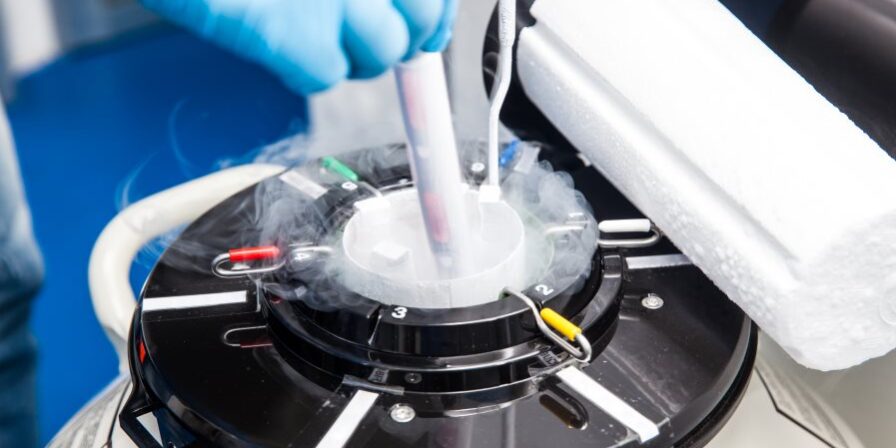There are many reasons one may pursue embryo freezing:
- There may be a medical reason, such as infertility or cancer.
- If you have been diagnosed with infertility and will be undergoing in-vitro fertilization (IVF), should you have embryos left over after transfer, they can be frozen for either subsequent pregnancies or if the first cycle wasn’t successful.
- If you have cancer and are about to go through treatment, such as chemotherapy where it could impact your fertility, you have the option of freezing your eggs for use at a later time or, if you’re in a relationship, you could opt to freeze your embryos.
More and more however, there are couples who seemingly have no fertility issues but they simply aren’t ready to have children yet. Therefore, they go through IVF to preserve their embryos at a time when they may be an ideal age for fertility, but want to have children down the road.
Many clinics today are advising patients to undergo a “freeze-all” cycle of IVF rather than transferring a fresh embryo after retrieval and fertilization. There are several contributing factors making the treatment practice of freezing and thawing embryos prior to transfer a preferred option for many.
First, there’s the advancement of the freezing technology used to preserve embryos. Embryos are now frozen via a process called vitrification. Vitrification is an ultra-rapid process that prohibits the formation of ice crystals. The process also uses cryoprotectants, which is a culture medium that protects tissue from damage during freezing. Prior to the use of vitrification, a slow freeze process was used and often compromised the quality of the egg or embryo. Today, vitrification has very little (if any) impact on the embryo.
Second, there is some belief that a woman’s uterine receptivity may be compromised directly after taking injectable hormones. The medications used in the IVF stimulation process can result in an estrogenic uterine environment, which may make the development of the uterine lining to be ahead of the developmental stage of the embryo. The theory is it will result in a lower implantation rate. Depending on your fertility history and what Dr. Wilcox believes is the best strategy for you to conceive and maintain a healthy pregnancy, he may suggest freezing all of your embryos rather than transferring them during a stimulated cycle. This is known as a “Freeze All Cycle”. Some programs report higher pregnancy and birth rates in cycles where there is a pause between the retrieval and the transfer.
Third, another reason why embryo freezing can be beneficial is if a recommendation is made to perform Preimplantation Genetic Testing for aneuploidy (PGT-A, formerly known as PGS) or Preimplantation Genetic Testing for monogenic disease (PGT-M, formerly known as PGD) on your embryos prior to selecting one for transfer. Patients may choose to have embryo testing to confirm that the embryo has a normal number of chromosomes, to determine if their embryos contain a certain genetic mutation which can result in disease and lastly for gender selection. Testing of the embryo is done by taking a small biopsy on day 5, known as the “blastocyst stage”. This means that a few cells are removed and tested. The embryos are frozen after the biopsy and are later transferred once the results are available, confirming the health of the embryo being transferred and decreasing the chance of miscarriage. You can learn more about these tests by visiting our PGS/PGD page.
If you have fertility concerns or are interested in embryo freezing, Dr. Wilcox and his medical team can help provide insight, options, and resources so you can discern if embryo freezing is right for you.
For more information on the numerous fertility treatments and family-building options offered at Wilcox Fertility, please continue to review other areas of our site or to inquire about financial information, please don’t hesitate to contact us via our secure online form or call us at 626.657.9327.







